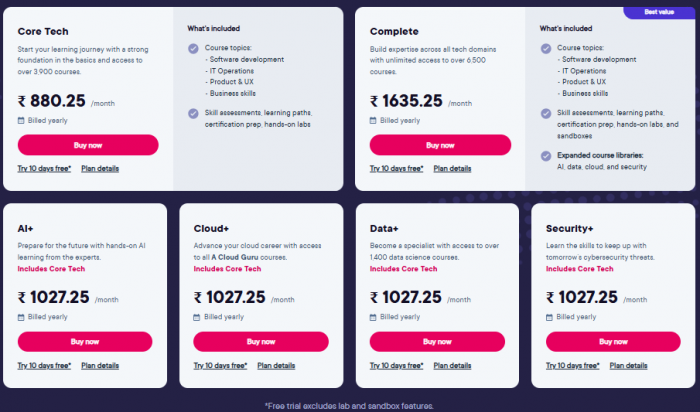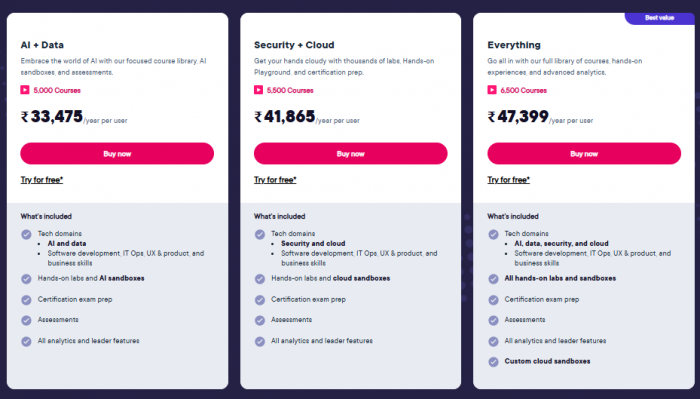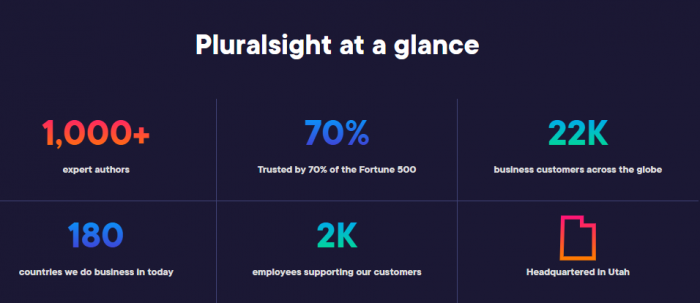With ongoing shifts in cloud computing, software development, and cybersecurity, professionals are under constant pressure to update their technical skills. Platforms like Pluralsight are positioned to meet this need, but what exactly does it offer, and how does it compare with similar options like Udemy?

This article breaks down the key features, pricing structure, access options, and user experience of Pluralsight as of 2025, without sales talk or speculation.
Understanding Pluralsight
Pluralsight is an online learning platform that provides structured courses, skill assessments, and hands-on labs focused on technology. Its content is tailored for working professionals and companies looking to upskill teams in roles such as:
- Software engineering
- Cloud architecture
- Cybersecurity
- DevOps and infrastructure
- Data and machine learning
Pluralsight’s learning model includes more than just passive video consumption. Its tools are designed to help learners measure, track, and apply knowledge in practical environments.
How Pluralsight Works
The platform is account-based. After registering, users access all tools via the Pluralsight login portal. Once inside, learners can:
- Choose from a catalog of thousands of Pluralsight courses
- Take Skill IQ assessments to benchmark their knowledge
- Follow role-based learning paths tailored to specific job titles
- Access real-world scenarios through interactive labs (Premium only)
The interface also supports features like bookmarks, notes, and transcripts, useful for long-term study or certification prep.

Available Content and Tools
Pluralsight’s content spans multiple categories within tech. Notable areas include:
- Programming languages: Python, JavaScript, C#, Java, Go
- Cloud computing: AWS, Microsoft Azure, Google Cloud
- Security: Ethical hacking, network defense, cloud security
- AI/ML: Machine learning, natural language processing, computer vision
- DevOps: CI/CD pipelines, Docker, Kubernetes, Terraform
Pluralsight Premium includes labs and real-world exercises, allowing users to experiment with cloud services or software environments in browser-based sandboxes.
Pluralsight Pricing and Subscription Plans
Pluralsight’s pricing structure has evolved in 2025 to better align with different learning goals. Whether you’re an individual user looking for structured upskilling or a business training an entire team, the platform offers role-specific plans at different price points.
All pricing shown here is based on yearly billing in INR.
Individual Plans

| Plan Name | Price/Month (Billed Annually) | Who It’s For | Key Inclusions |
| Core Tech | ₹880.25 | Beginners are building foundational skills | 3,900+ courses, assessments, paths, basics in dev, IT, business, UX |
| Complete | ₹1635.25 | Professionals needing full access | 6,500+ courses, all domains, labs, hands-on content, cert prep |
| AI+ | ₹1027.25 | Learners focusing on AI and ML | Core Tech + hands-on AI labs and AI course access |
| Cloud+ | ₹1027.25 | Cloud engineers or GCP/AWS/Azure learners | Core Tech + all “A Cloud Guru” courses |
| Data+ | ₹1027.25 | Data analysts and aspiring data scientists | Core Tech + 1,400+ data science-focused courses |
| Security+ | ₹1027.25 | Security professionals | Core Tech + content specific to cybersecurity threats and practices |
All individual plans come with a 10-day free trial (labs/sandboxes excluded).
Business & Team Plans
Designed for enterprises, L&D teams, and upskilling entire departments:

| Plan Name | Price/Year/User | Tech Coverage | Extras Included |
| AI + Data | ₹33,475 | AI, ML, data, and dev tools | 5,000+ courses, labs, AI sandboxes, cert prep, analytics |
| Security + Cloud | ₹41,865 | Security, cloud, and development | 5,500+ courses, sandboxes, cert prep, analytics, manager dashboards |
| Everything | ₹47,399 | All domains unlocked | 6,500+ courses, custom sandboxes, cert prep, all leader & usage tools |
Includes analytics dashboards, hands-on content, and integration into enterprise workflows.
Trial and Free Access Options
Pluralsight does not offer permanently free courses, but there are limited-time and entry-level access options, including:
- 10-day trial (or 200 minutes of content viewing)
- Free April Access (full access once per year)
- Special event access during AWS Week, Cloud Month, etc.
Additionally, non-video learning resources like blogs, guides, and tech insights are available for free at all times in the Resources section.
Comparing Pluralsight vs Udemy
Many learners ask whether Pluralsight or Udemy is the better choice. The answer depends on the use case.
| Feature | Pluralsight | Udemy |
| Content structure | Curated learning paths and assessments | Standalone courses are sold individually |
| Focus | Technology, IT, development | Wide-ranging, includes business, lifestyle, etc. |
| Access model | Subscription-based | Pay-per-course |
| Hands-on labs | Included (Premium plan) | Not natively supported |
| Certification alignment | Strong support for AWS, Azure, CompTIA, etc. | Varies widely by instructor |
For structured learning tied to a role or certification, Pluralsight may offer a more consistent experience. For one-off courses in diverse areas (e.g., Excel, freelancing, or marketing), Udemy may be more cost-effective.
Key Use Cases and Suitability
Pluralsight is typically used by:
- Professionals aiming to upgrade their skills in cloud, development, or security
- New entrants preparing for tech certifications
- Organizations are training tech teams across roles and departments
- Managers measure team skill levels using analytics dashboards
It may be less suitable for casual learners or those exploring non-tech subjects, which are not Pluralsight’s focus.

Summary
Pluralsight remains a focused platform for developing technical skills in 2025. Its strength lies in its structured approach, curated content for job roles, and inclusion of skill assessments and real-world labs (for Premium users). While it does not offer a large number of permanently free courses, the trial options and periodic events allow prospective users to test the platform before committing.
For those looking to build or validate a long-term tech career, Pluralsight serves as a comprehensive and measurable system. For learners looking for short, one-off tutorials across various topics, platforms like Udemy may be more flexible.
Post Comment
Be the first to post comment!





